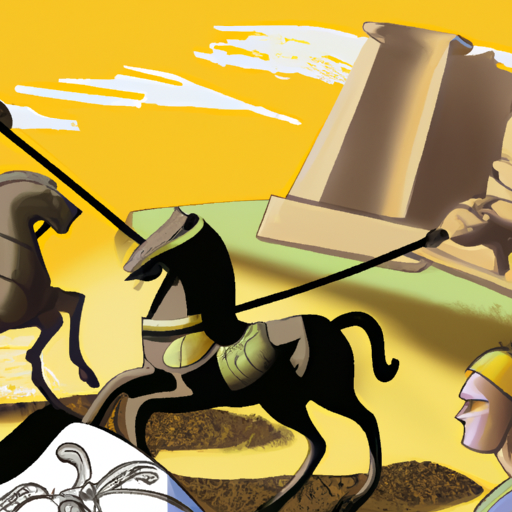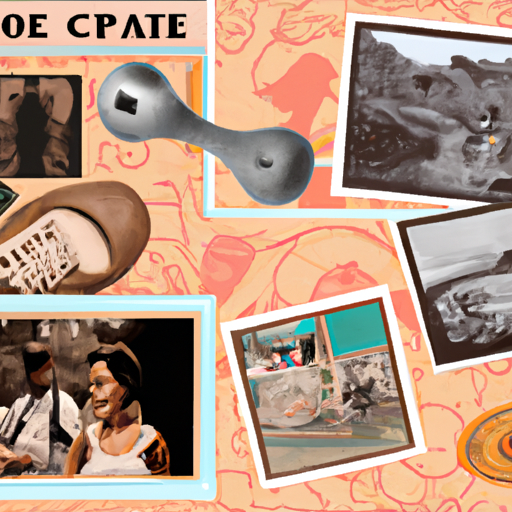Exploring the Historical Relationship between Vikings and Alcohol
Unearth the secrets of Vikings and discover if imbibing was an integral part of their lifestyle. Explore the past and uncover what these seafaring warriors were like in days gone by. Did they really have a penchant for alcohol? Dive into the depths of Viking culture to find out!

The Vikings of the 8th to 11th centuries, a seafaring people of Northern Europe, left behind an impressive legacy. But much of their customs and traditions remain a puzzle. One such enigma is the role that alcohol played in Viking life. Was it an important part of their culture? To answer this, we must delve into the history of these ancient warriors.
Mead, a honey-based alcoholic drink, was widely consumed by the Vikings and thought to symbolize strength, courage, and fertility. Beer made from barley or wheat was also popular among them; weaker than modern-day varieties, it was often mixed with herbs or honey for flavor. It appears beer was regularly enjoyed at feasts and gatherings for its taste as well as its perceived medicinal benefits.
Alcoholic beverages were not only used for pleasure; they also served as currency among the Vikings. Mead could be traded for goods or services and even offered up as tribute during raids on foreign lands. This hints that drinking held a place of importance in Viking life and culture – though overindulgence was not tolerated due to the potential disruption it posed to order.
From what can be gleaned from history, imbibing did form an essential part of Viking existence. Mead and beer were both favored drinks among them – each with its own special meaning in regards to religion, celebration, trade, and more – yet excessive consumption was not condoned by Viking society as it could lead to disorder or harm those around them.
.
Introduction

A curious saga of the Viking’s liaison with tipple has been unveiled. Though it is accurate that these seafaring warriors had a penchant for beer, mead, and other intoxicants, there is proof that they did not necessarily overindulge or take to intemperance. In fact, archaeological finds point to the Vikings being more moderate in their imbibing than other civilizations at the time. This could be attributed to a mix of spiritual convictions, social rules, and even practical considerations like needing fighters to stay sharp and watchful in combat.
– Historical Evidence of Viking Alcohol Consumption
A long and varied history of alcohol consumption has been attributed to the Vikings. Archaeological evidence, such as ceramic vessels used for brewing and storing beer, remnants of grain used in its production, drinking horns and bowls, all point to the fondness of beer, mead and other fermented drinks among the seafaring raiders who eventually settled in Scandinavia. Written sources from the period further attest to the integral role of alcohol in Viking culture.
Beer was a popular beverage among the Vikings; mead was made from fermented honey and water and was consumed at feasts and gatherings before battle or celebration of victory. It also featured prominently in religious ceremonies. Wine was imported from other parts of Europe while aquavit (a type of schnapps) was crafted from local ingredients like juniper berries or potatoes. This potent drink was often served at weddings or other special occasions – a testament to its significance for the Viking people.
Alcohol provided sustenance on long sea voyages and social lubrication at feasts, but it appears to have been more than just a source of pleasure – it had spiritual importance too. Thus it can be concluded that alcohol held an important place in Viking life throughout their history.
– Viking Drinking Rituals and Customs
The fabled customs and rituals of Viking imbibing have been a source of captivation for ages. Alcohol was an essential part of life in the Viking Age, and it featured prominently in many spiritual ceremonies. Notorious for their hard-drinking ways, these ancient warriors would often partake in grand feasts with copious amounts of mead, beer, and ale.
Vikings had an affinity for drinking games such as ‘Hnefatafl’ (similar to chess) or ‘Kubb’ (akin to lawn bowling). Drinking competitions were also commonplace during gatherings, with the victor being crowned King or Queen of the feast. These contests usually involved physical challenges like arm wrestling or ax throwing.
Furthermore, when attending a ‘blót’ (offering made to gods), it was customary for members of the community to bring mead or ale that could be shared amongst those present. This practice was believed to be a way of uniting them together in reverence to their faith.
It was thought that alcohol could provide insight into their future and grant them access to divine knowledge from their deities. As such, they often consumed large quantities at sacred ceremonies – even becoming intoxicated – in order to receive spiritual guidance from their gods.
Though Vikings are no longer around today, tales about their unique drinking rituals and customs remain intact. It is evident that these valiant warriors held alcohol in high regard, not only using it for entertainment but also as a means to commune with their gods and gain insight into the future.
– The Impact of Alcohol on Viking Society and Culture
The influence of alcohol on Viking society and culture is an intricate one, a complex web of ceremonies, rituals, politics, social gatherings, and even warfare. Its place in everyday life was paramount to the Norse people; it was integral to their religion, art, literature, music and more.
In religious ceremonies and rituals, drinking was used to honor the gods. It was so revered that only priests or chieftains were allowed to partake during such occasions. Similarly, alcohol had a major impact on politics in Viking times – it served as a way for leaders to show their power and authority over their followers. Drinking contests between warriors were also commonplace in order to prove themselves worthy of leadership roles within their clans.
Social gatherings often revolved around drinking too – parties were held to celebrate weddings or victories in battle. Guests would drink mead or ale while singing songs and telling stories about the gods or heroic deeds performed by their ancestors. Even warfare had its role for alcohol – warriors would consume it before battle in order to boost courage and strength before going into battle; they thought it helped them stay focused on the task at hand and less likely be overwhelmed with fear or panic during combat situations.
It’s clear that alcohol played an important part of Viking life throughout its history – a factor that cannot be ignored when considering Norse society and culture.
– How Alcohol Influenced Viking Warfare Tactics
A mysterious and inexplicable connection exists between the strategies of Viking warfare and the power of alcohol. Tales abound of their remarkable ability to consume vast amounts of liquor, with no other able to match them in such a feat. This affinity for inebriation was integrated into their battle tactics; imbibing before battle was thought to embolden warriors and give them strength, and drinking heavily was a regular prelude to combat. Once victorious, a celebratory feast followed, complete with copious amounts of alcohol. Alcohol played an integral part in Viking culture, and its influence on their war strategies cannot be understated.
– Examining the Role of Alcohol in Ancient Norse History
For centuries, the part alcohol played in ancient Norse history has been a source of fascination. Archaeological discoveries from burial sites and other artifacts have revealed that alcohol was an essential component of Norse civilization, used for spiritual rituals, social occasions, and financial transactions. To gain a more thorough comprehension of its role in Norse society, one must delve into archaeological findings as well as written records such as sagas and laws to get an idea of how it was perceived by the people of the time. Unearthing this knowledge can give us a better grasp on the importance of alcohol in ancient Norse history.
conclusion

Evidence from the past has revealed a strong connection between Vikings and alcohol. It seems that they indulged in mead, beer, and wine, and even partook in drinking competitions as part of their celebrations. Alcohol was deeply embedded in Viking culture, with them evidently relishing its effects.
.
Some questions with answers
Q1: Did Vikings love alcohol?
A1: Yes, Vikings were known for their love of alcohol.
Q2: What kind of alcohol did the Vikings drink?
A2: The Vikings primarily drank mead, which is an alcoholic beverage made from fermented honey and water.
Q3: How did the Vikings use alcohol?
A3: Alcohol was used in many different ways in Viking culture. It was used as a form of payment, to celebrate special occasions, and even to honor fallen warriors.
Q4: Was drinking alcohol a part of daily life for the Vikings?
A4: Yes, drinking alcohol was a normal part of daily life for the Vikings. They believed that it helped them stay warm in cold climates and provided them with energy and courage during battle.
Q5: How has the history of Viking drinking influenced modern culture?
A5: The history of Viking drinking has had a lasting impact on modern culture. Many aspects of modern beer-brewing techniques can be traced back to Viking traditions, and some popular beers today are named after Viking gods and heroes.




